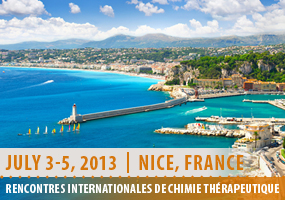
|
NiceLocated in southern Europe and at the most south-eastern tip of France, Nice is a privileged intersection between the Alps, the Provence, Corsica and Italy. After Paris, Nice is the second most popular tourist destination in France. With its 400.000 inhabitants, it is the fifth largest city of the country, and one of the most vibrant European cities. Nice, also known as the jewel of the French Riviera, offers a multitude of pleasures to almost every one of every age. You may be interested in the city’s history and culture, you might want to enjoy the exceptional heritage of parks and gardens, or you may be looking for a beach holiday with friends and family. Or perhaps it will be the shopping streets, the bars and the lively nightlife which will draw you to Nice. The area also offers a wide range of sporting activities for the athletic-minded visitor: from water sports and scuba diving to golf, hiking trails and more. Not only the city's seaside location and the abundance of activities, but also the exceptional weather conditions make Nice a wonderful destination for international events. Nice enjoys a Mediterranean climate and thanks to the refreshing sea breeze, summers are not too hot. During the RICT Symposium, scheduled for the beginning of July, the weather should thus be most pleasant. Nice is also popular for its ease of access: the Nice Côte d’Azur Airport, the second largest in France, offers direct services to 90 destinations in more than 40 countries. To find out more on how to go to Nice, please check the corresponding page on this website. The RICT organisers warmly invite you to attend the RICT Symposium this July, and to take your time to discover Nice and the French Riviera - be it before, during or after the conference. Cause let there be no doubt: Nice is the perfect destination where business can be easily combined with pleasure! __________________________________________________________________________________
The city remained under the protection of the House of Savoy until 1860, with two interruptions: from 1691 to 1713, the French king Louis XIV took over the Comté de Nice, and from 1792 to 1814, it was part of the French Republic, then Napoleon I’s Empire, becoming the “Alpes-Maritimes department” for the first time. In 1860, the population of Nice and its Comté voted in a plebiscite to become part of France, thanks to the Treaty of Turin, signed by Napoleon III and Victor Emmanuel II, King of Sardinia. From that time on, the town enjoyed considerable growth and prosperity. It became a fashionable city, open to culture and arts, as well as services, scientific and high-tech activities. The architecture of Nice is astonishing - examples of the ever-present Belle Epoque style, as well as Baroque influences, can be found in the houses and mansions on the hills of Mont Boron. The most famous architectural sites in Nice are the Basilica Notre Dame, which is the oldest of the modern religious buildings, erected in the heart of the new town, and the opera building, which was constructed in 1885 according to the blueprints of the Nicois architect, Francois Aune, who wanted the opera to resemble the Palais Garnier in Paris. (Source: http://dk.maison-de-la-france.com/dk/BrochuresPDF/Nice_practical.pdf) Marc Chagall National Museum & Matisse Museum Art lovers might also be interested in the Matisse Museum, which includes Matisse's personal collection. The painter lived in Nice from 1917 until his death in 1954. The museum, set up in 1963 in the so-called Villa Genoise, is located in Cimiez, a hilly region in north Nice. It gathers one of the world's largest collections of Matisse’s works, tracing his artistic beginnings and his evolution through his last works. To find out more on the museum, we invite you to check the official website http://www.musee-matisse-nice.org/ Nice – a green city One of the most renowned places to visit is the “Parc Floral Phoenix” (Phoenix Flora Park) on the western end of Nice. Situated a few steps far from the very Mediterranean coastline this park is the third most visited green facility of its type along the French Riviera. On the area of about seven hectares the park’s personnel has gathered over 2,500 types of plants some of which rare, some exotic to the Mediterranean background and some are protected in order to preserve the local genetic material. The beaches Visitors can choose from 15 private beaches and 20 public beaches, and all private beaches offer mattresses, parasols, beach huts and showers. Restaurants, bars and boat rental shops can be found all along the Mediterranean seaside. Shopping in Nice Night Life Useful Links
|






















